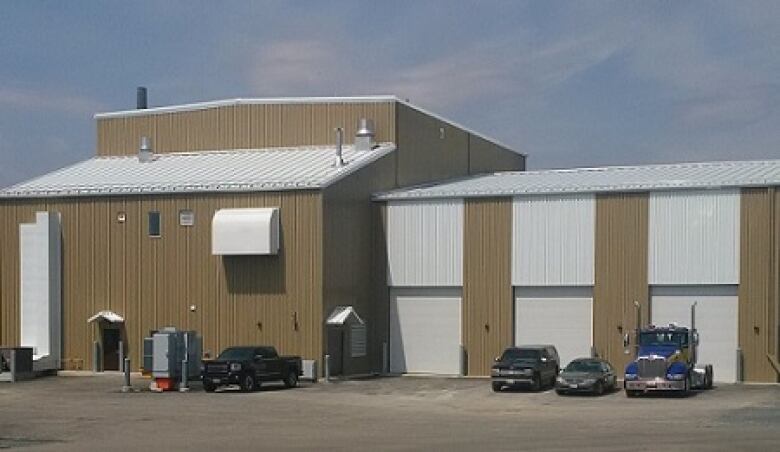Sudbury sludge dumping stops in Lively, with opening of biosolids plant
"I hope it's the end and I hope they do something about what's left there"

A smelly chapter in the history of Sudbury has come to an end.
For decades, the city dumped sewage sludge on Vale'stailings pond near Lively, insteadof processing it, like most other cities in the province.
But that has ended now with a $63 million dollar solution.
The city's new biosolids plant, along with the connected thickening facility and sludge receiving station, opened earlier this month.
"It's been completed on budget and on schedule. And it should be celebrated," said city project managerAkliBen-Anteur.

The end of the decades of tailing dumping was prompted by complaints from Lively residents, when the occasional wafting of bad smells turned into a constant odour in the summer of 2008.
"You know, you go to an outhouse that hasn't been cleaned? That's what you're smelling, all day," remembers Ninth Avenue resident Irene Laplante.
Thanks to pressure from upset neighbours, the city started planning its biosolids plant five years ago, embarking on Greater Sudbury's first public-private partnership.
The plant was built and is operated by N-Viro, which is now owned by Walker Environmental Group, but is owned by the city.
Last week, it came on line and there is no longer a steady stream of trucks bringing sludge through Lively to the tailings.
Laplante ishoping the smells will stop, but wonders what will happen to the sludge that is still stored on the tailings.
"I hope it's the end and I hope they do something about what's left there," she said."Because a lot of people, because we're not dealing with it every day now like we were, they've kind of forgotten about it."
Ben-Anteur saidwhat comes out the other end of the new biosolids plant is now also being trucked to mining company land.
It's used as a fertilizer to help regreen property owned by Glencore left barren by decades of mining pollution.












_(720p).jpg)


 OFFICIAL HD MUSIC VIDEO.jpg)
.jpg)



























































































